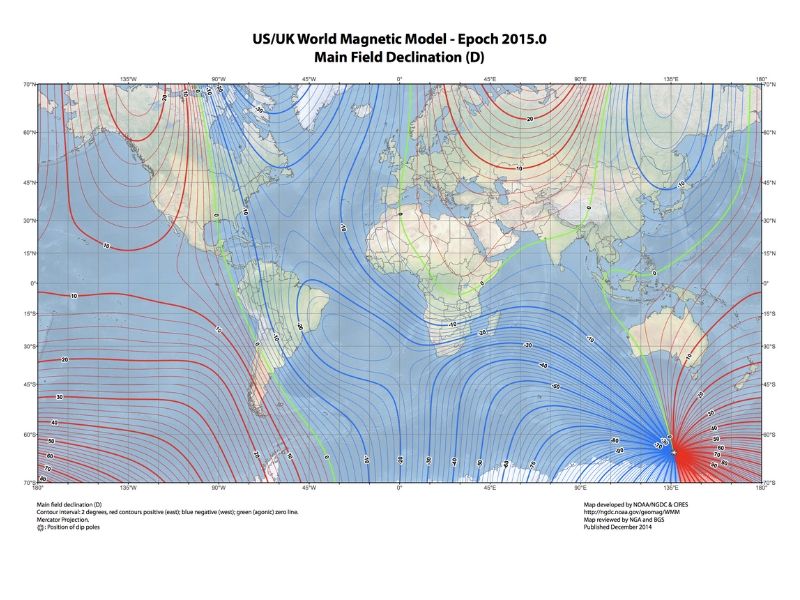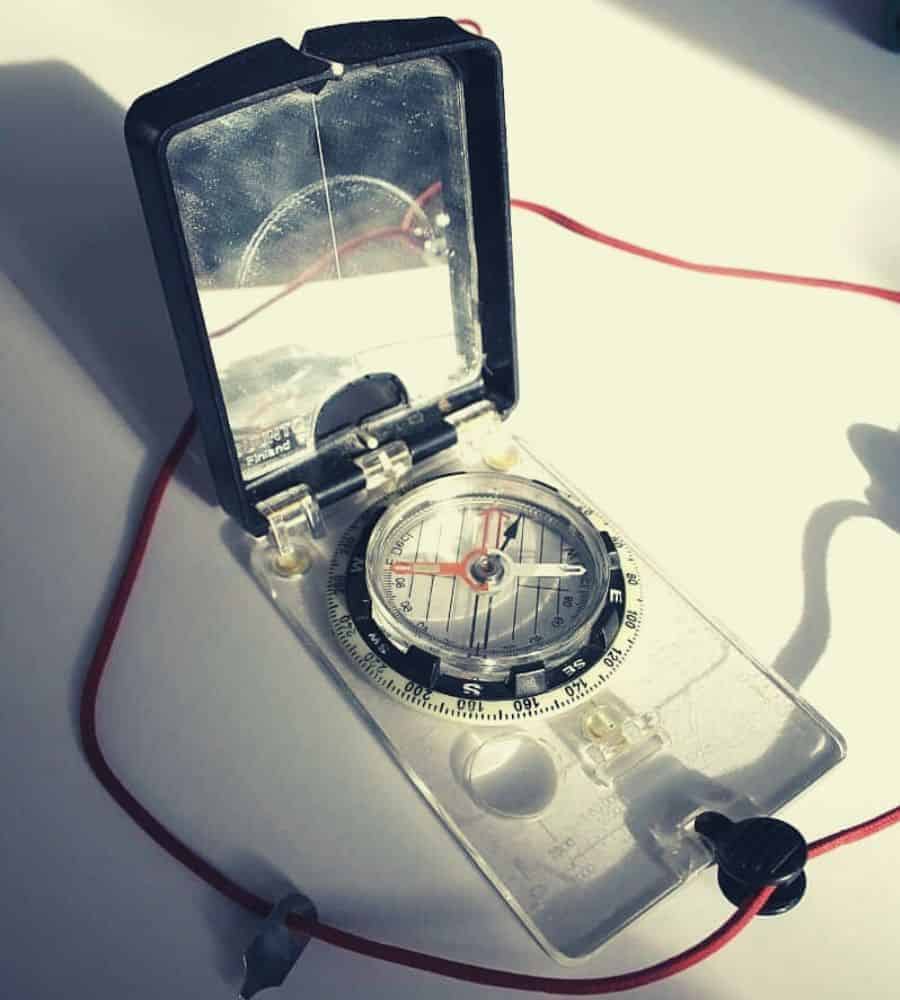How to Set Declination on a Suunto Compass
What is magnetic declination?
Magnetic declination or magnetic variation refers to the disparity in the angle between true north vs magnetic north. Magnetic north is the "north" given by the magnetized compass needle (and points in the direction of north in the Earth's magnetic field lines) and true north (or "geographic" north), which is the direction of the geographic North Pole.
At this point, you'll be forgiven for asking…magnetic north vs true north…wait..is there two north poles?
The angle of magnetic declination is not fixed and varies depending on both your location and overtime – in keeping with magnetic changes in the earth's core.
Without going into uber-geology geek mode, the churning of liquid iron in the earth's core causes the earth's magnetic field to be in constant flux. As the iron core slowly churns, the observed magnetic field above at the earth's surface responds and changes in response.
The Ever-Changing Magnetic Field of the Earth
This great declination map video from NOAA shows the change in the position of the magnetic north pole as it dances around the northern Canadian Islands from 1590 to the present day.
The Green line bisecting North America is the 0 degrees line of magnetic declination, i.e. at any location on this line, there is no difference in bearing between true north and magnetic north.
The red lines are positive declinations (where your compass needle would be pointing at magnetic north, east of true north). The blue lines are negative declination lines, stipulating that the location of the magnetic north pole lies on a bearing west of true north.
How to Find Magnetic Declination for your area
There are three ways to find out the magnetic declination of your location.
- Your topographic map. Typically a (good) map will have the bearing (positive or negative) that you should use to adjust for magnetic declination. This is sometimes in the form of a small compass or written as text. Often placed near the scale and legends of your map.
- A second source would be to do a quick google online for any magnetic declination calculator, alternatively follow this link to take you to the NCEIs calculator.
- Lastly, if you allow your browser to access your current location, going to magnetic-declination.com will bring you details on your current location on a magnetic declination map.
Check the Age of Your Map:
If you are using a severely outdated map, then the declination quoted on it may be wrong. How wrong? Well, that depends on how out of date and where in the world you are located. Double-checking a second source will never hurt.
How to adjust your compass readings for magnetic variation
1. Check magnetic variation for your area
Because declination values vary from place to place, before setting off on your trip, you should find out the degree of magnetic variation for wherever you plan to do your hiking.

2. Learn How to adjust for Magnetic Declination
How to Set Declination on a Compass
- Many compasses come with an adjustment key that allows you to make the necessary modifications for magnetic declination with the minimum of fuss. In most cases, the key is attached to the compass lanyard when purchased
- Setting a compass for magnetic variation is pretty straightforward, turn your compass over so the housing faces down
- Insert the adjustment key into the screw in the back of the compass
- Make a declination adjustment by turning the key until the indicator is the required number of degrees either side of zero
- You can now take compass bearings without having to worry about the earth's magnetic field, sending you off in the wrong direction.

How to Use a non-adjustable compass
Using a compass without adjustable declination is slightly trickier but shouldn't pose too many problems to those happy to do a little mental arithmetic while on the move and transferring readings from their compass to the terrain and vice-versa.
- Again, find the declination variation for the area you're hiking in
- Make the necessary adjustments for declination by adding or subtracting the declination value for your area
- Bear in mind when making adjustments that:
- It is essential to do so each time you take a reading and work with a bearing
- An east declination will be a positive number, and a west declination will be a negative number
3. Remember to adjust in the right direction
The following are two crucial points to remember when using readings taken from either your map or the terrain:
- When taking a reading from the terrain and transferring it to your map, you must add the magnetic variation to get the correct bearing
- When transferring a bearing from your map to the terrain, you must subtract the magnetic variation to calculate the magnetic bearing you will then travel on
Magnetic Declination: Add or Subtract? Two Examples
Example 1: If you happen to be in Tucson, Arizona, which has a 9-degree East declination – that magnetic north is east of true north by 9-degrees.
Therefore, you must add 9 degrees to the heading (the direction your compass needle points towards) on your compass's dial to determine your true heading, i.e., if your reading is 230 degrees, you are pointed towards a heading of 239 degrees, and to travel on a bearing of 230 degrees will need to get a reading of 221 degrees on your dial.
Example 2: If you happen to be in the vicinity of Mount Fuji, Japan, where the angle of declination is -7 degrees, then magnetic north and true north are 7 degrees apart, with magnetic north sitting 7 degrees to the west of true north.
To adjust for this you must subtract 7 degrees to the heading to determine your true heading, i.e., if your reading is 200 degrees, you are pointed towards a heading of 193 degrees, and to travel on a bearing of 200 degrees will need to get a reading of 207 degrees on your dial.
Learn How to Adjust for Declination and Stay Found
Learning how to use a map and compass correctly is a must for anyone serious about spending time in nature. A vital part of this process is to learn how to correctly set a compass (or your brain) for the magnetic declination of your location (whether it is positive/negative).
We hope you enjoyed our guide, and please let us know your thoughts in the comments below!
How to Set Declination on a Suunto Compass
Source: https://www.myopencountry.com/compass-magnetic-declination/